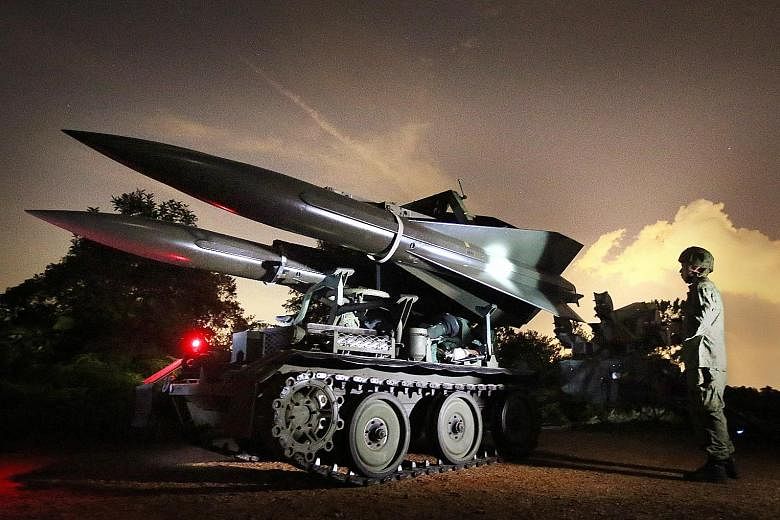New challenges and opportunities in a multinational air combat exercise have helped operators of a Republic of Singapore Air Force (RSAF) surface-to-air missile system hone their skills.
This RSAF I-Hawk ground-based air defence system was deployed in the exercise, called Pitch Black, for the first time since 2006.
Exercise Pitch Black is the largest multilateral air combat exercise held in the Australian continent.
It is hosted by the Royal Australian Air Force (RAAF), and involves the air force of countries such as the United States, Germany, Indonesia and Singapore.
For Exercise Pitch Black, which is being held until Aug 19, the I-Hawk was deployed to defend key installations.
-
I-HAWK SYSTEM
40km
Effective range
2.7
Number of times that missiles are faster than speed of sound
85%
Single shot kill probability
The I-Hawk system can home in on targets 40km away and, after locking on to them, fire missiles travelling at speeds of up to 2.7 times the speed of sound.
Captain Benjamin Chua, officer commanding for RSAF's 163 Squadron, said that the I-Hawk was part of one team that had to defend against "attackers" in an exercise scenario.
Exercise scenarios in Exercise Pitch Black pit two teams against each other. One team's aim is to defend an area.
The other team's aim is to destroy the former's air forces and ground-based air defence units and then conduct bombings on targets in the area.
"For the first day, we had a shock that (the exercise attackers) were so good," said Capt Chua, 30. However, after refining strategies and receiving feedback from other countries, the I-Hawk was able to give attackers a much harder fight, he said.
A key challenge the I-Hawk faced in the exercise was that aircraft could come from all directions, said Capt Chua. In Singapore, due to limited airspace, aircraft during combat scenarios can come from only certain directions.
For Exercise Pitch Black, each I-Hawk had 15 people working directly on it, with 24 more supporting them.
The I-Hawk is also deployed in Exercise Cope Tiger every year, a trilateral air exercise conducted by the air forces of Singapore, Thailand and the US.
Fighting against ground-based air defence systems like the I-Hawk makes exercise missions to secure airspace and bomb targets more challenging, said Captain Louis Tan, an F-15SG fighter pilot from RSAF's 149 Squadron. Capt Tan said that for the missions he flew in 2014, the ground-based air defence units were simulated.
"This time round, because the units are actually there, we have to (better) defend ourselves. Manoeuvring our aircraft to defend against these units eats into the time allocated. We have to come up with a good tactical game plan to defeat these units so as to not compromise on time," Capt Tan, 31, said.
Yesterday evening, military aircraft from the RAAF, RSAF and the US Air Force also conducted an aerial show for spectators at Mindil beach to thank the local community for their support of military training activities in the region.

